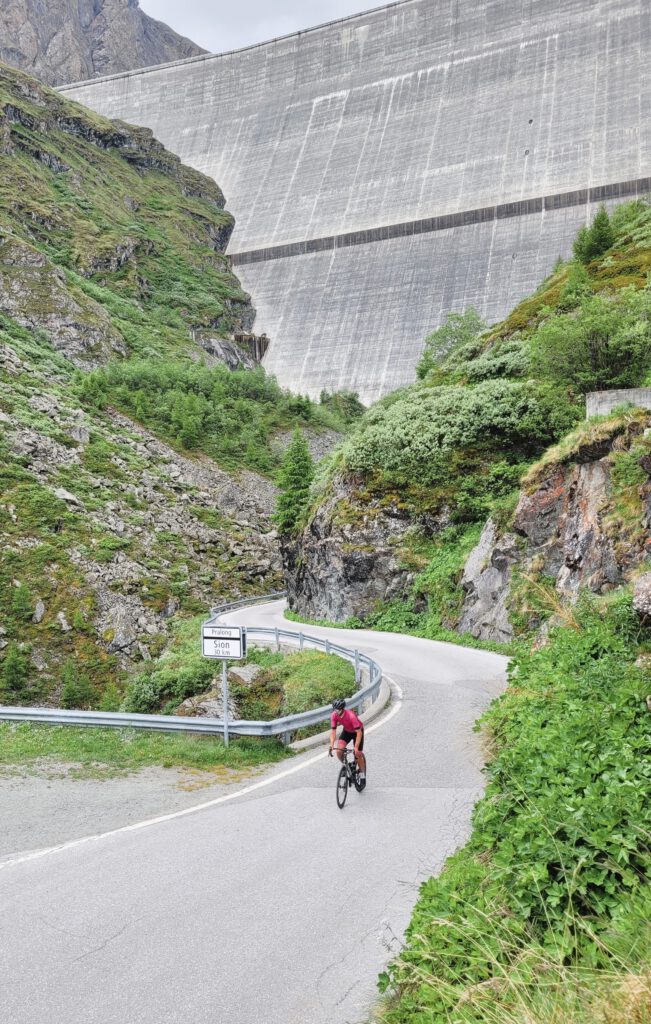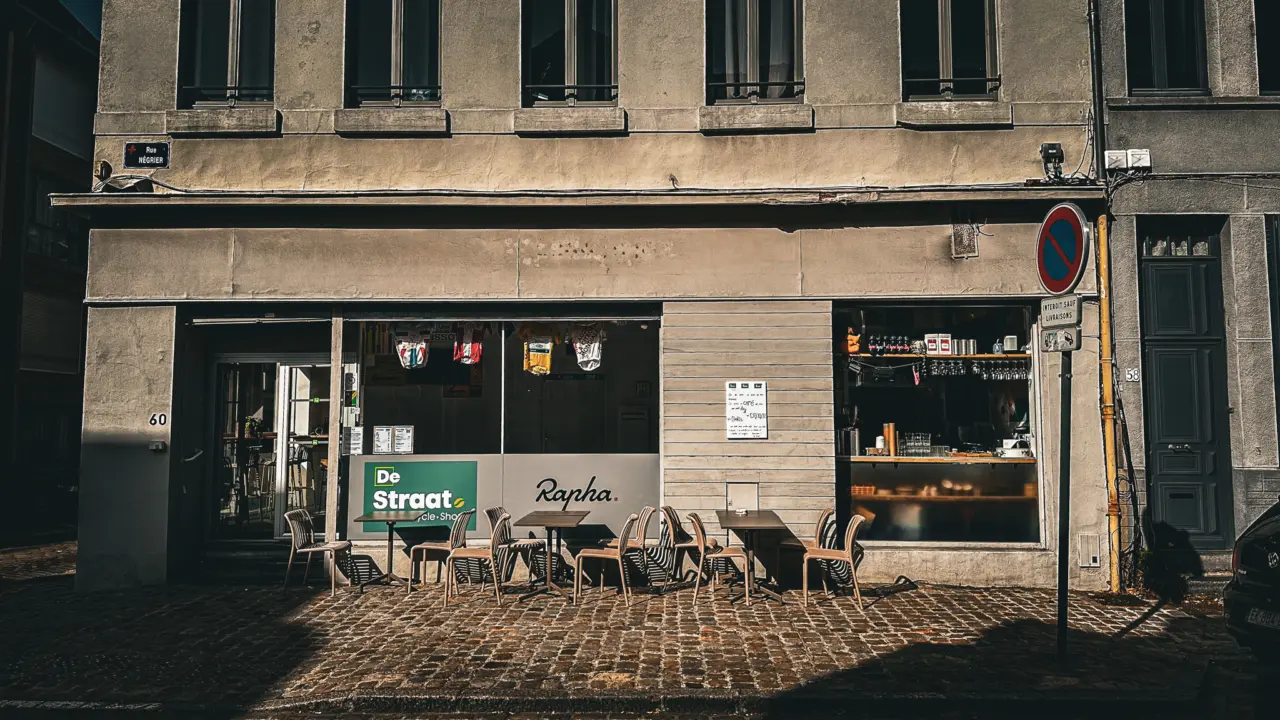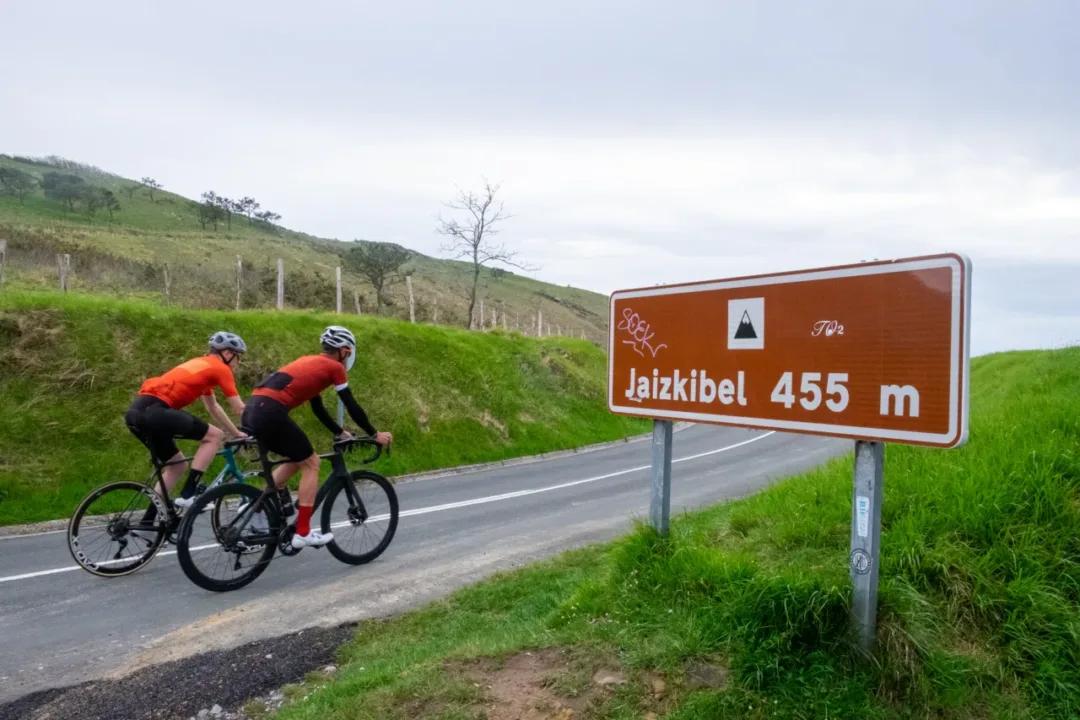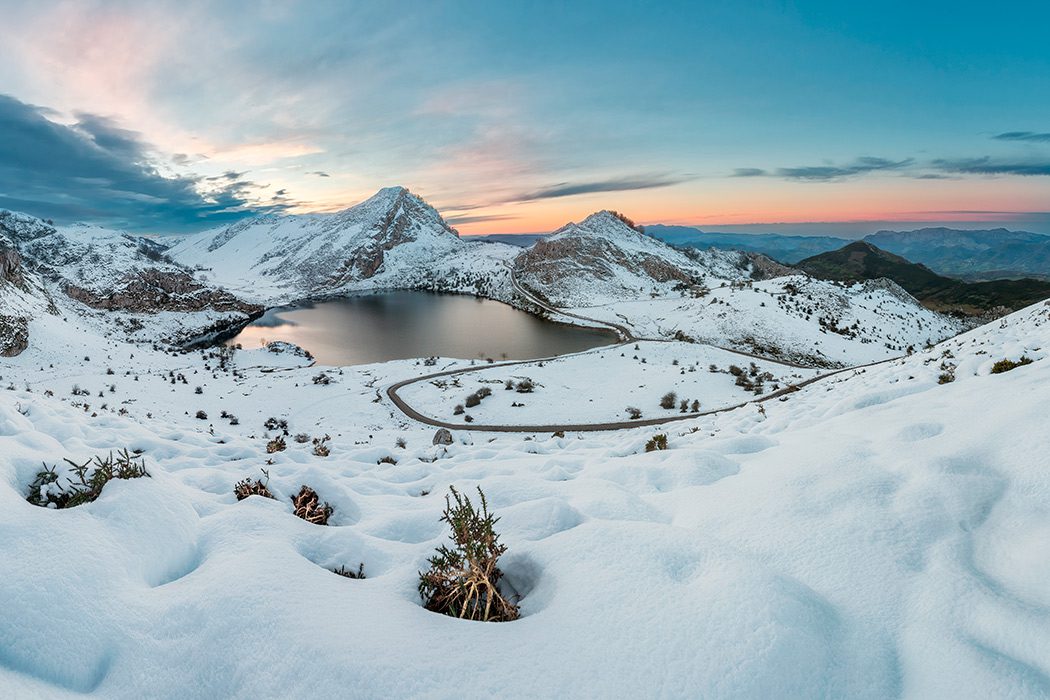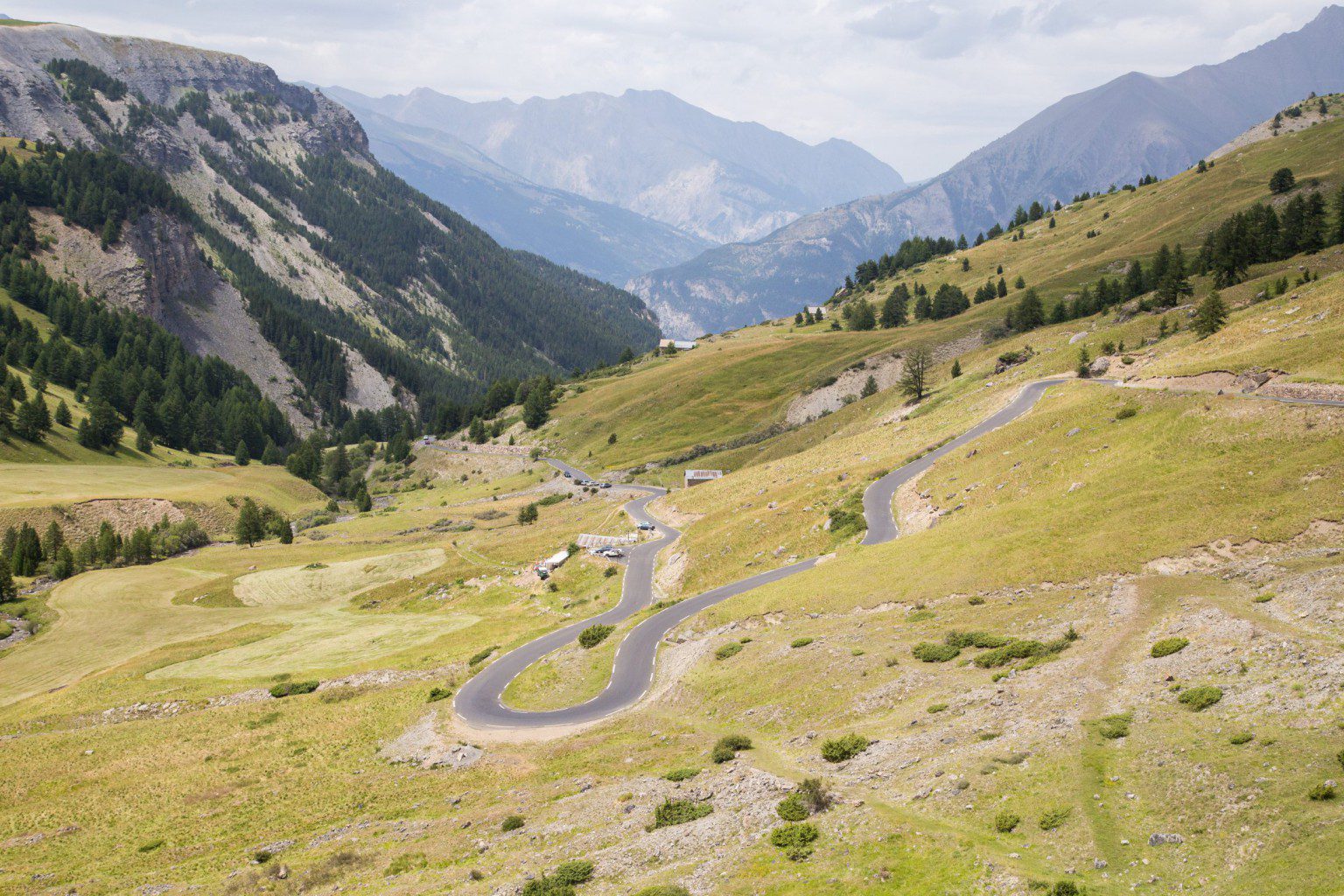Desires of the vertical cyclist are abundantly answered on a good 900 kilometres of asphalt from Utrecht. The region Valais bursting with cycling climbs, set in a well-painted mountain landscape. She herself remains calm under it, very calm. Mainly on roads ending at a dam, few set off uphill to disturb that calm. Cycling in Valais: Anzère is something to sincerely look forward to.
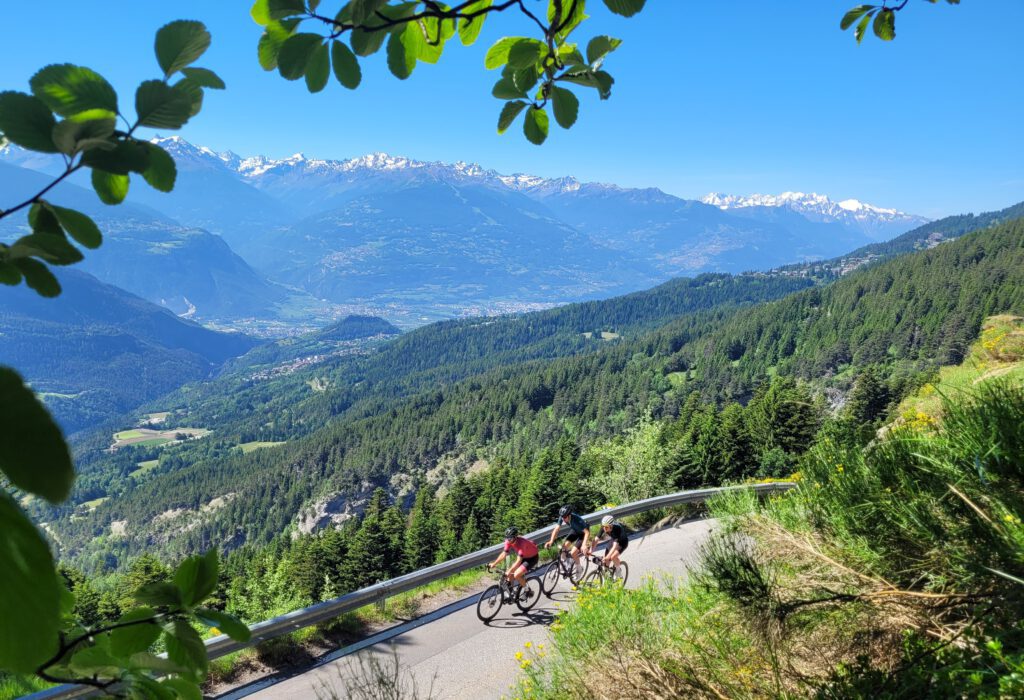
In collaboration with our partner Anzere Tourisme Mountain High Chasers Erwin and Erwin headed for the Swiss Mountain Village in the Valais region. Read their stunning report here. TEXT: Erwin Reijneveld PHOTOS: Erwin Visser, Erwin Reijneveld and Ruben Hoogland
Handsome neighbours
Bright light flings my eyes. It comes from behind the curtain. I put one leg out of bed and eagerly swing the curtain to the right. White mountain peaks sparkle against a bright blue sky. The smell of fresh coffee meets me. OK, I'm making that last one up. That smell is still two presses on the coffee machine away from us. But the tone has been set, and not by the weather apps that have been straining to keep expectations low for the past week.
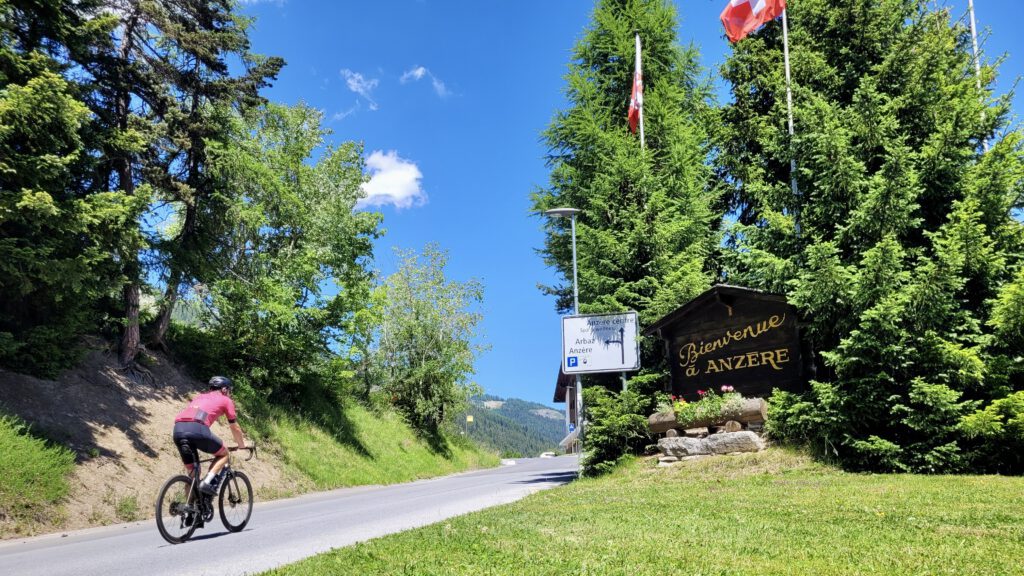
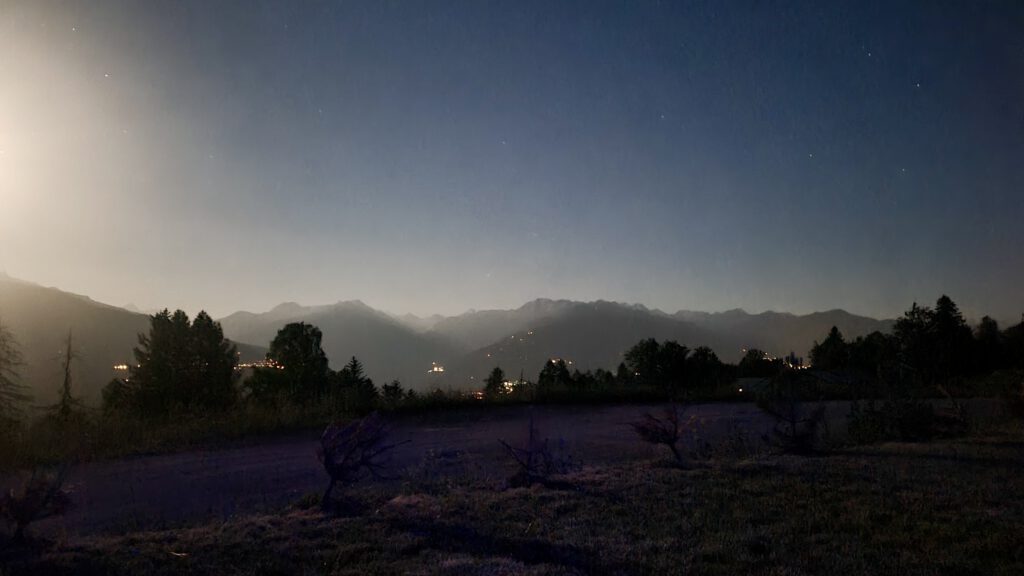
Lac de Tseuzier
Moments later, another important pushbutton (with the familiar Garmin beep) heralds the start of the ride and we descend, turning our backs on Anzére. To ascend again a little further east towards Lac de Tseuzier. Chatting and pointing out beauty to each other, we gain altitude. Fingers consistently aiming across the Rhone valley. An opposite side that sometimes gives a wink through the forests, but only really shows itself in full glory on the open flanks. An across, which has no equal. What pure beauty! Of course, the grass is always greener next door. So it is here. And let that be exactly the huge advantage. No matter which climb you take on the northern side of Valais, the opposite neighbours always attract attention. Where white peaks fill the horizon between roughly the Matterhorn and Mont Blanc.
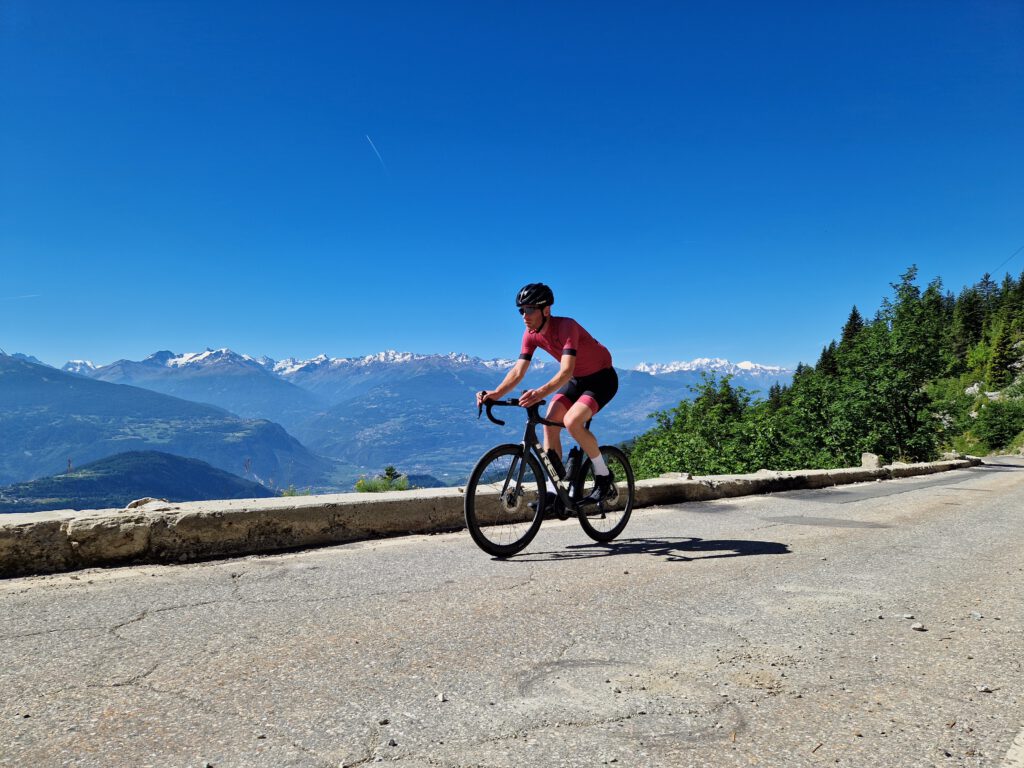
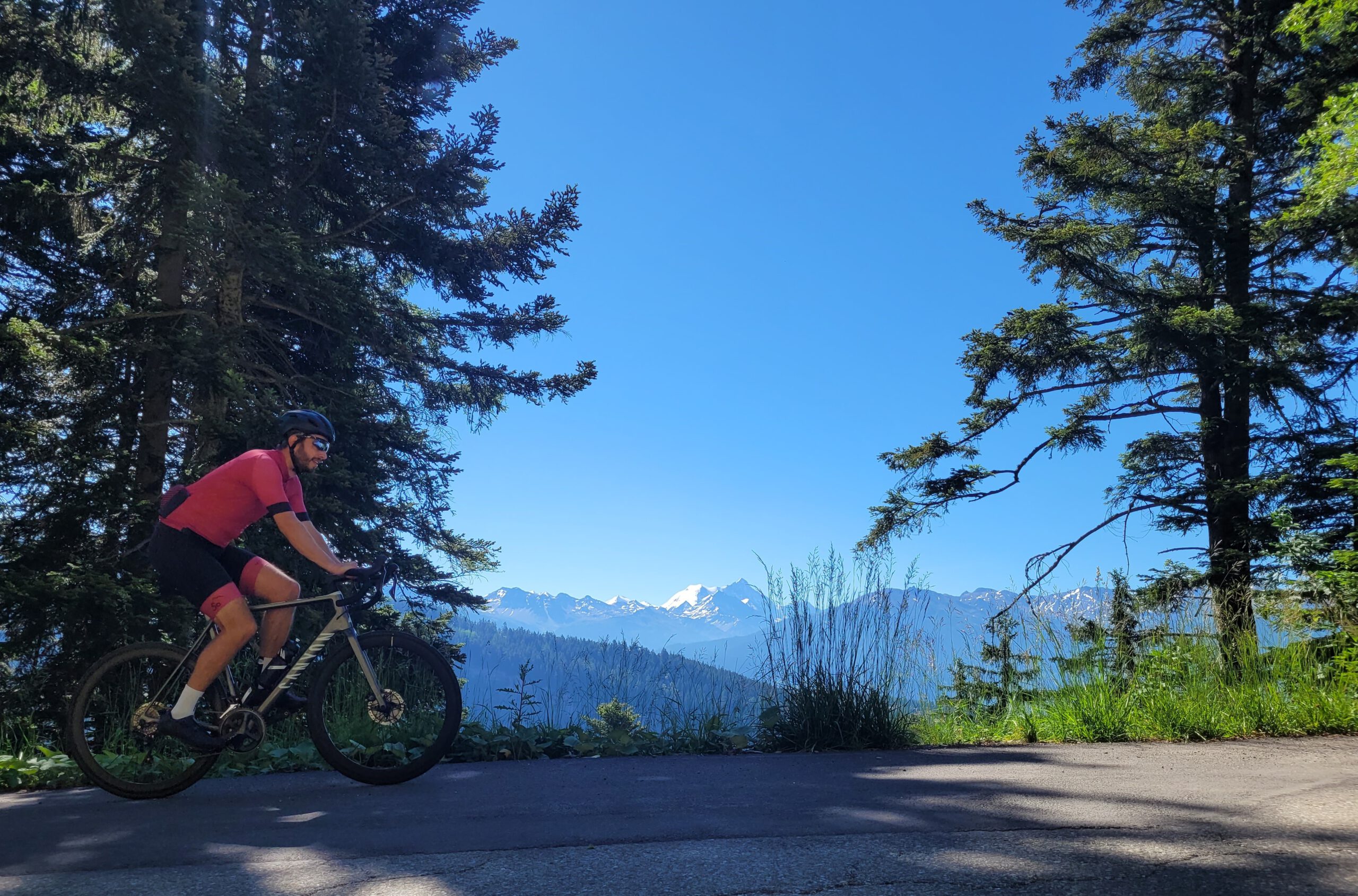
"Whichever climb you pick on the north side of Valais, the opposite neighbours always attract attention"
Before we know it, the climbing is done and our wheels are rolling level over the dam. To confirm, the reservoir lies silently beside it. The end of the dam becomes the start of the road back, but first coffee. Ironically, the cup we were looking forward to is not going ahead because the restaurant is closed. Reason for the closure? A 'water problem'.
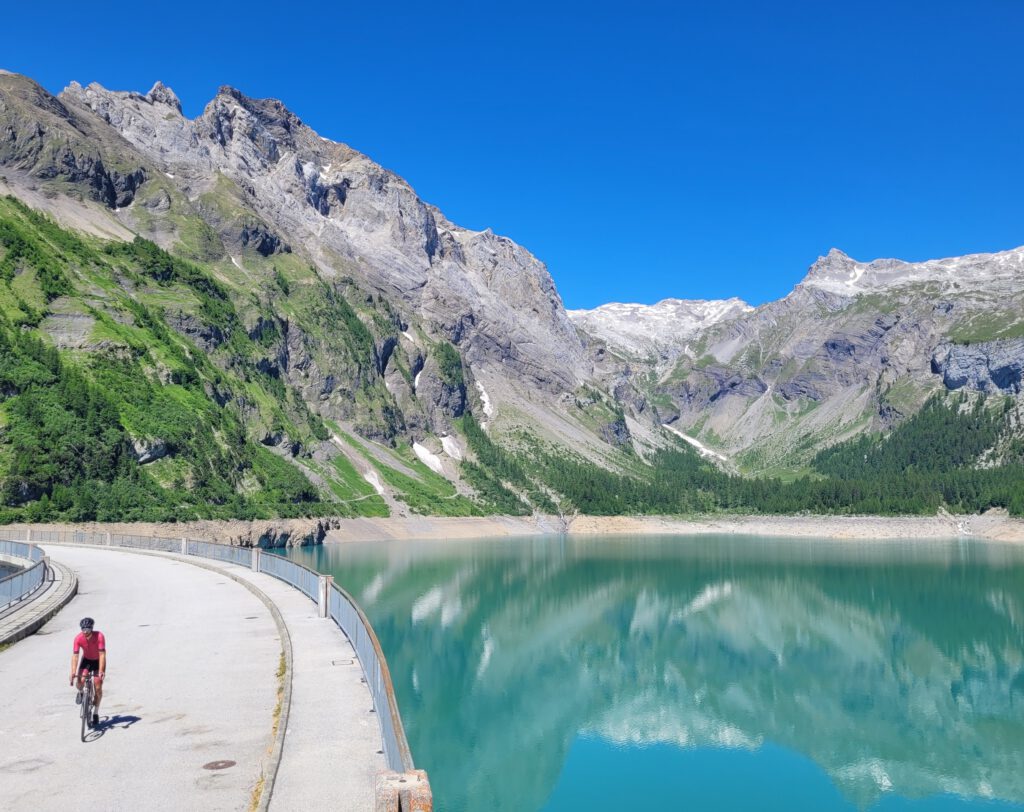
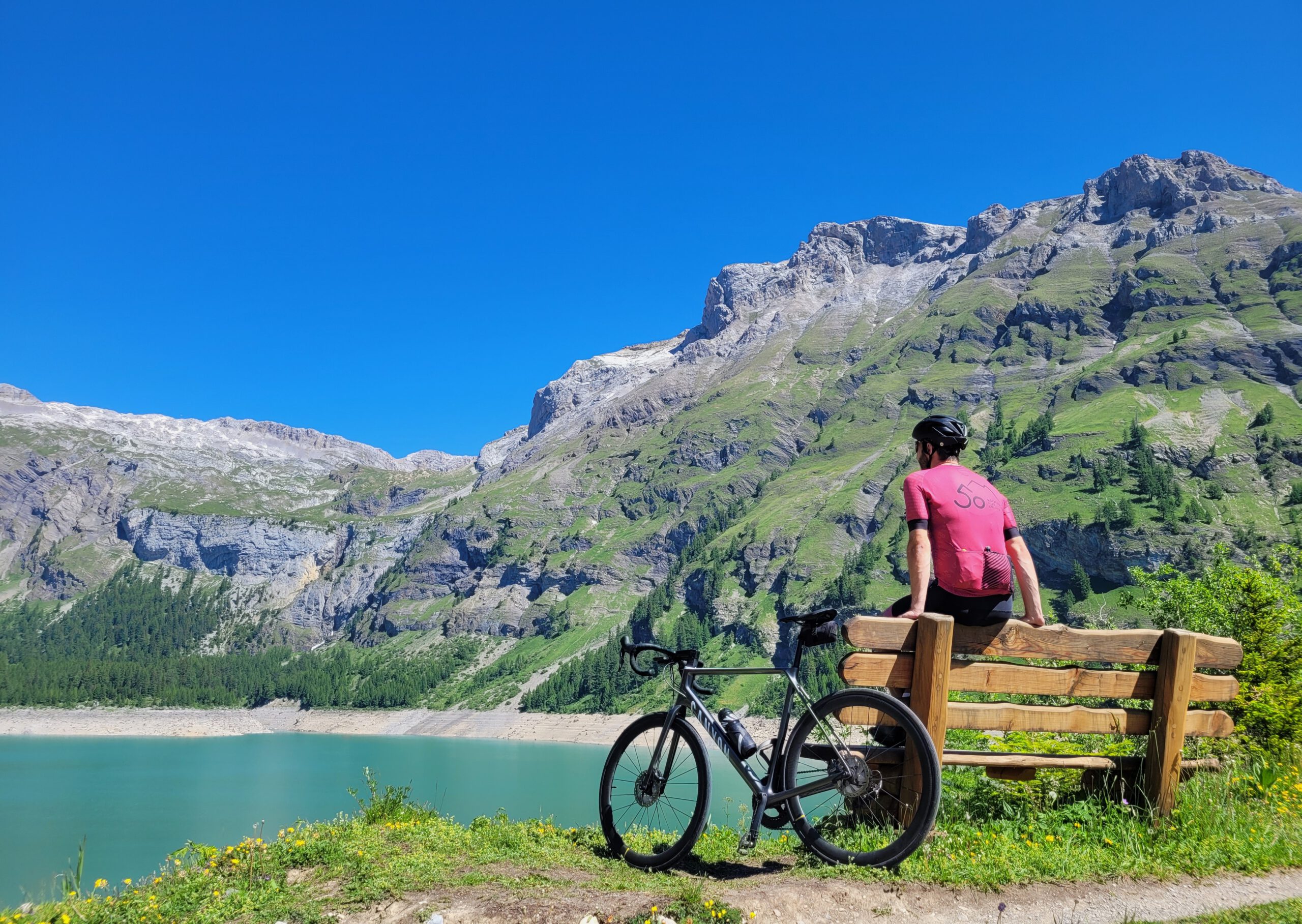
The road to nothing
Caffeine and calories are still found 767 metres below in Ayent. After lunch, we begin to underestimate this trip, although that understanding will take some time. We steer for Col du Sanetsch. A tip that came to us, simply as tips are often packaged. With few words, the messenger obliges you to follow the tip, 'won't regret it' is the final push you often get.
The mercury does not rise any further on this scorching hot day when we begin to do so. The umpteenth falling drop of sweat is caught by the little screen in front of my handlebars. Besides the trickle, the screen shows another signal that could be picked up; 18 kilometres of climbing, 1461 altimeters, to go. Freely we pedal on. Eight per cent ascent. Next kilometre, same angle. One eight follows another. The mountain itself stands in silent contrast to our efforts. The standardised picture, but perfectly coloured. The sound varies everywhere between rippling and splashing water. Supported by chirping birds with the occasional cowbell from the alpine meadows full of wildflowers. In this calm, the Sanetschhore (or Mont Brun in French) sits as a beacon in the distance.


No roadside signs counting down or teasing us with gradients. Not even cars that let us know with smelly brake discs that we are not alone in our struggle against gravity. For pity, we have to be exclusively with ourselves, and that is entirely appropriate. The road winds its way over spaghetti bends and bridges, through tunnels and over ledges, through sheer beauty an entrance upwards. A road to nothing, nothing but the mountain itself. The eight per cent gives way to double digits, flattens out and becomes steep again. Waiver gives way to enduring awe and a big dollop of euphoria. The tip is confirmed and will be passed on.
Down for a moment
Behind the summit, the road continues for a few kilometres, mostly downhill. After Lac de Sénin there is another short climb to the local inn. Where there is also a little lift going towards Gsteig (not quite a road to nowhere after all), to which you can even take your bike. Our day is almost over, but the little lift allows for a nice round via Aigle and Martigny back to Zion.
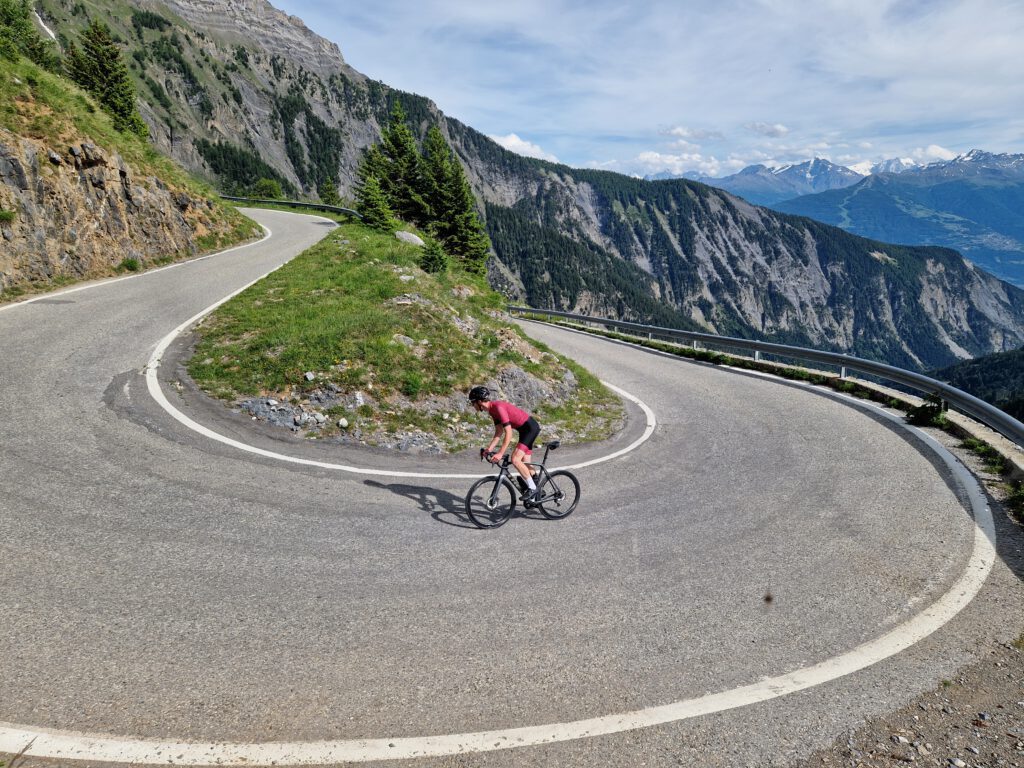
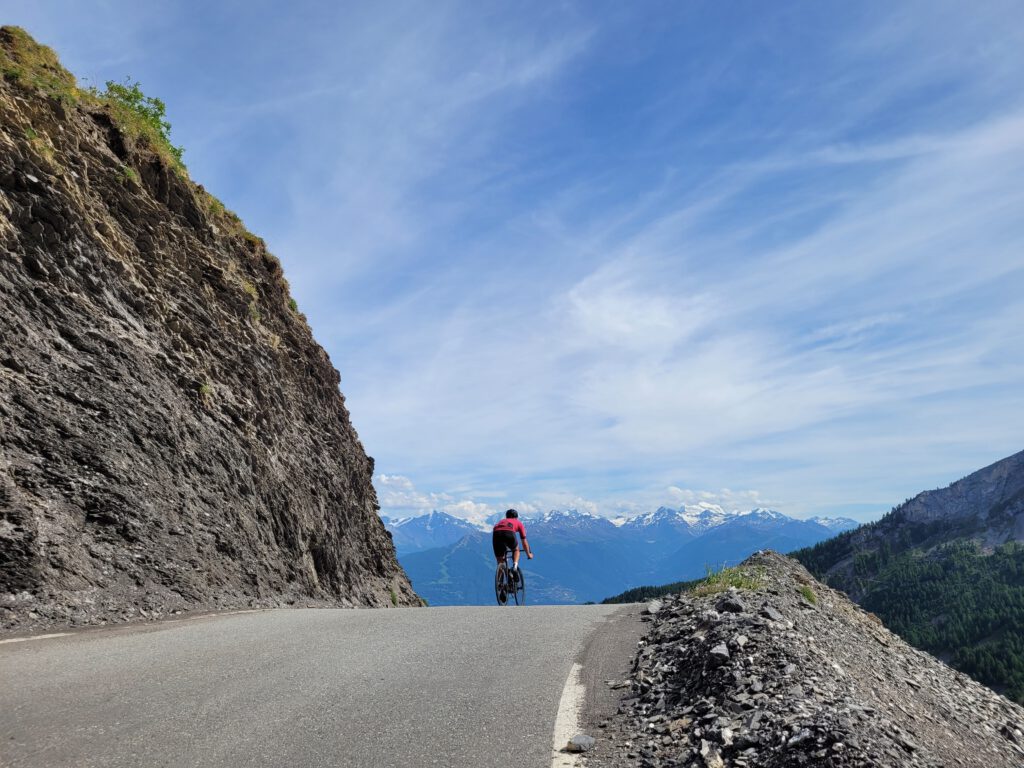
Col du Sanetsch
25.1 kilometres long, average of 6.9% with a maximum of 16%. You cover a total of 1733 altimeters to finish at an altitude of 2247 metres above sea level.
From grapes to water for wine
From entering Valais, the vineyards catch the eye. Especially against the northern flank of the Rhone, the mountains are papered with them. The fresh green grape leaves impose themselves on you everywhere. Often growing on beautiful terraces. Only after 1100 metres above sea level you no longer encounter the beloved fruit, making this the highest wine region in Europe. Have we ever drunk a Swiss wine outside these borders, we wonder. That chance is slim.
Small exports
Only one per cent of the wine is for export, the rest they enjoy drinking for themselves. The grape grows so luxuriantly here not only because of the many hours of sunshine, but it needs the traditional 'bisses' to go with it. These are ancient irrigation systems of wooden gutters and stone trenches, handmade hundreds of years ago to channel water from the mountains to agriculture. They are proud of that here. For instance, the 'Grand Bisses d'Ayent' (irreverent; a wooden gutter against a mountain wall) appears on the 100 Swiss franc note.
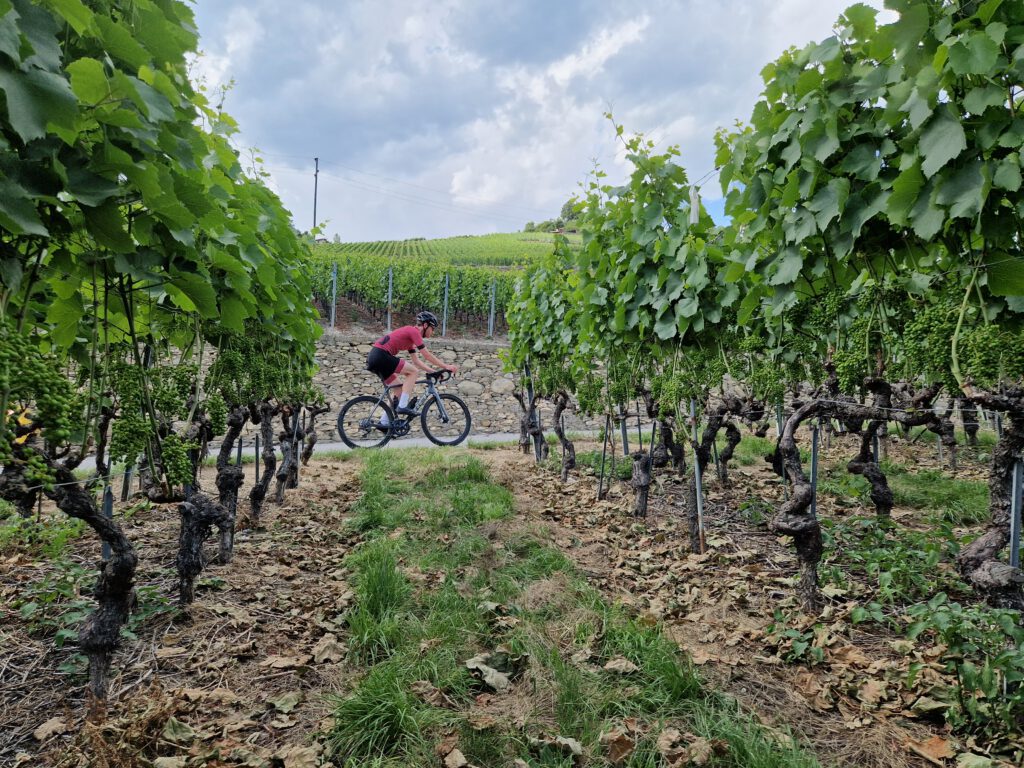

Since a cyclist usually wants to earn the alcohol, you have to climb before settling down for a local glass. In Valais, then, you often leave among the grapes, to climb on to the water. Because many quiet roads here end at a (reservoir) lake. Water for wine, in other words. Incidentally, all this viticulture offers another advantage for cyclists. Up to 1,100 metres it is a labyrinth of country roads, which offers every opportunity to cycle around. Only if you really want to climb to a high altitude, you have to do a round trip in many cases.
Rest
After the climbing violence, the trip is almost over. We climb back to our base Anzère. Just before that, we let the friction between cogs and chain come to a halt. Unclip a shoe from the pedal and let it sit on the ground. Take a sip from the water bottle and listen silently to nothing. The city and traffic artery Sion lie some 10 kilometres down below, but a stone's throw will come close. Yet it does not emit any sound that reaches up to here. Staying higher up a mountain on a cycling trip gives some climbing work at the end of each ride, but the silence gives admiring Valais plenty of room.
Cycling in Valais: Anzère stay
Woodland Village Anzère
Our rides begin and end in the luxury and tranquillity of Woodland Village, just below Anzère. After the last climb of the day, here you can look out beautifully over the endless mountain peaks and look back on the little piece you have conquered of it. We are also spoilt with the very nice jacuzzi for after the tough rides and the delicious breakfast in the morning to start the day with good energy.
Barrage de la Grande Dixence
Climb from Sion to Europe's highest dam. The last 8 kilometres take you along a quiet, steep and stylish road to the foot of this giant vat of concrete. From there, you can take a lift to get to the top of the dam and take in a view that will leave you speechless.


